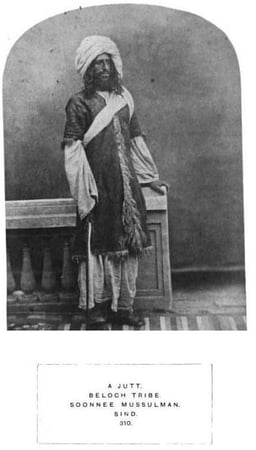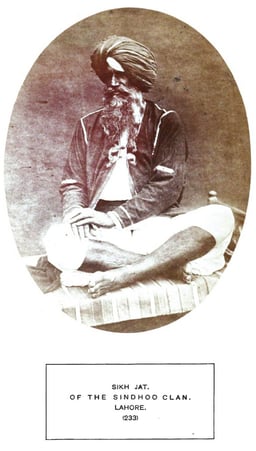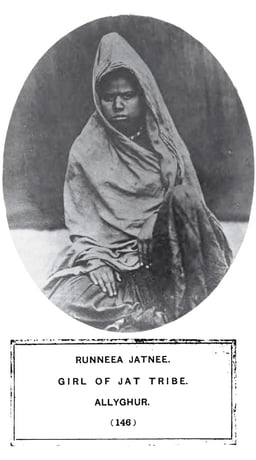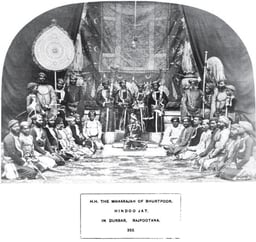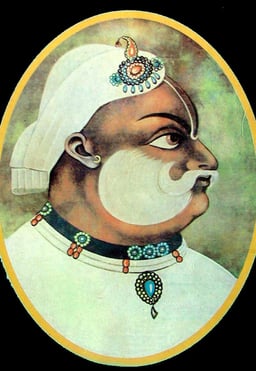Jat people
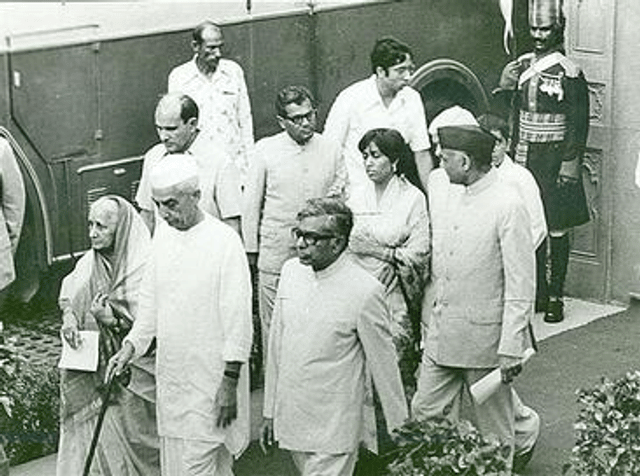
Jat people

The Jat people (Hindi pronunciation: [dʒaːʈ]) are a traditionally agricultural community native to the Indian subcontinent, comprising what is today Northern India and Pakistan. Originally pastoralists in the lower Indus river-valley of Sindh,[2][3] Jats migrated north into the Punjab region, Delhi, Rajputana, and the western Gangetic Plain in late medieval times.[3][4] Primarily of Hindu, Muslim and Sikh faiths, they now live mostly in the Indian states of Haryana, Punjab, Delhi, Rajasthan and Uttar Pradesh and the Pakistani provinces of Punjab and Sindh.
Traditionally involved in peasant agriculture, the Jat community saw radical social changes in the 17th century, when the Hindu Jats took up arms against the Mughal Empire during the late 17th and early 18th century.[5][6] The Hindu Jat kingdom reached its zenith under Maharaja Suraj Mal of Bharatpur (1707–1763).[7] The Jat community of the Punjab region played an important role in the development of the martial Khalsa Panth of Sikhism; they are more commonly known as the Jat Sikhs.[8] By the 20th century, the landowning Jats became an influential group in several parts of North India, including Haryana, Punjab,[9] Western Uttar Pradesh,[10] Rajasthan,[11] and Delhi.[12]Ency]]Over the years, several Jats abandoned agriculture in favour of urban jobs, and used their dominant economic and political status to claim higher social status.[[13]](https://openlibrary.org/search?q=Sunil%20K.%20Khanna%20%282009%29.%20 [[CITE|13|https://openlibrary.org/search?q=Sunil%20K.%20Khanna%20%282009%29.%20*Fetal%2Ffatal%20knowledge%3A%20ne)
Jats are classified as Other Backward Class (OBC) in seven of India's thirty-six States and UTs, namely Rajasthan, Himachal Pradesh, Delhi, Uttarakhand, Uttar Pradesh, Madhya Pradesh and Chhattisgarh.[14] However, only the Jats of Rajasthan – excluding those of Bharatpur district and Dholpur district – are entitled to reservation of central government jobs under the OBC reservation.[15] In 2016, the Jats of Haryana organized massive protests demanding to be classified as OBC in order to obtain such affirmative action benefits.[14]
History

‘Jat’, a numerous tribe spread over much of north-west India.
The Jats are a paradigmatic example of community- and identity-formation in early modern Indian subcontinent.[16] "Jat" is an elastic label applied to a wide-ranging, traditionally non-elite,[1] community which had its origins in pastoralism in the lower Indus valley of Sindh.[16] At the time of Muhammad bin Qasim's conquest of Sind in the 8th century, Arab writers described agglomerations of Jats in the arid, the wet, and the mountainous regions of the conquered land.[18] The Islamic rulers, though professing a theologically egalitarian religion, did not alter either the non-elite status of Jats or the discriminatory practices against them that had been put in place in the long period of Hindu rule in Sind.[19] Between the eleventh and the sixteenth centuries, Jat herders migrated up along the river valleys,[20] into the Punjab,[16] which had not been cultivated in the first millennium.[21] Many took up tilling in regions such as Western Punjab, where the sakia (water wheel) had been recently introduced.[16][22] By early Mughal times, in the Punjab, the term "Jat" had become loosely synonymous with "peasant",[23] and some Jats had come to own land and exert local influence.[16]
According to historians Catherine Asher and Cynthia Talbot,[24]
The Jats also provide an important insight into how religious identities evolved during the precolonial era.
Before they settled in the Punjab and other northern regions, the pastoralist Jats had little exposure to any of the mainstream religions.
Only after they became more integrated into the agrarian world did the Jats adopt the dominant religion of the people in whose midst they dwelt.[24]
Over time the Jats became primarily Muslim in the western Punjab, Sikh in the eastern Punjab, and Hindu in the areas between Delhi Territory and Agra, with the divisions by faith reflecting the geographical strengths of these religions.[24] During the decline of Mughal rule in the early 18th century, the Indian subcontinent's hinterland dwellers, many of whom were armed and nomadic, increasingly interacted with settled townspeople and agriculturists. Many new rulers of the 18th century came from such martial and nomadic backgrounds. The effect of this interaction on India's social organization lasted well into the colonial period. During much of this time, non-elite tillers and pastoralists, such as the Jats or Ahirs, were part of a social spectrum that blended only indistinctly into the elite landowning classes at one end, and the menial or ritually polluting classes at the other.[25] During the heyday of Mughal rule, Jats had recognized rights. According to Barbara D. Metcalf and Thomas R. Metcalf:
Upstart warriors, Marathas, Jats, and the like, as coherent social groups with military and governing ideals, were themselves a product of the Mughal context, which recognized them and provided them with military and governing experience.
Their successes were a part of the Mughal success.[26]
As the Mughal empire now faltered, there were a series of rural rebellions in North India.[27] Although these had sometimes been characterized as "peasant rebellions", others, such as Muzaffar Alam, have pointed out that small local landholders, or zemindars, often led these uprisings.[27] The Sikh and Jat rebellions were led by such small local zemindars, who had close association and family connections with each other and with the peasants under them, and who were often armed.[28]
These communities of rising peasant-warriors were not well-established Indian castes,[29] but rather quite new, without fixed status categories, and with the ability to absorb older peasant castes, sundry warlords, and nomadic groups on the fringes of settled agriculture.[28][30] The Mughal Empire, even at the zenith of its power, functioned by devolving authority and never had direct control over its rural grandees.[28] It was these zemindars who gained most from these rebellions, increasing the land under their control.[28] The triumphant even attained the ranks of minor princes, such as the Jat ruler Badan Singh of the princely state of Bharatpur.[28]
The non-Sikh Jats came to predominate south and east of Delhi after 1710.[31] According to historian Christopher Bayly
Men characterised by early eighteenth century Mughal records as plunderers and bandits preying on the imperial lines of communications had by the end of the century spawned a range of petty states linked by marriage alliance and religious practice.[31]
The Jats had moved into the Gangetic Plain in two large migrations, in the seventeenth and eighteenth centuries respectively.[31] They were not a caste in the usual Hindu sense, for example, in which Bhumihars of the eastern Gangetic plain were; rather they were an umbrella group of peasant-warriors.[31] According to Christopher Bayly:
This was a society where Brahmins were few and male Jats married into the whole range of lower agricultural and entrepreneurial castes.
A kind of tribal nationalism animated them rather than a nice calculation of caste differences expressed within the context of Brahminical Hindu state.[31]
By the mid-eighteenth century, the ruler of the recently established Jat kingdom of Bharatpur, Raja Surajmal, felt sanguine enough about durability to build a garden palace at nearby Dig (Deeg).[32] Although, the palace, Gopal Bhavan, was named for Lord Krishna, its domes, arches, and garden were evocative of Mughal architecture, a reflection ultimately of how much these new rulers—aspiring dynasts all—were products of the Mughal epoch.[32] In another nod to the Mughal legacy, in the 1750s, Surajmal removed his own Jat brethren from positions of power and replaced them with a contingent of Mughal revenue officials from Delhi who proceeded to implement the Mughal scheme of collecting land-rent.[31]
According to historian, Eric Stokes,
When the power of the Bharatpur raja was riding high, fighting clans of Jats encroached into the Karnal/Panipat, Mathura, Agra, and Aligarh districts, usually at the expense of Rajput groups.
But such a political umbrella was too fragile and short-lived for substantial displacement to be effected.[33]
States of the 18th century
Jat rulers occupied and ruled from Gwalior Fort on several occasions:
Maharaja Suraj Mal captured Agra Fort on 12 June 1761 and it remained in the possession of Bharatpur rulers till 1774.[44]
Sikh states
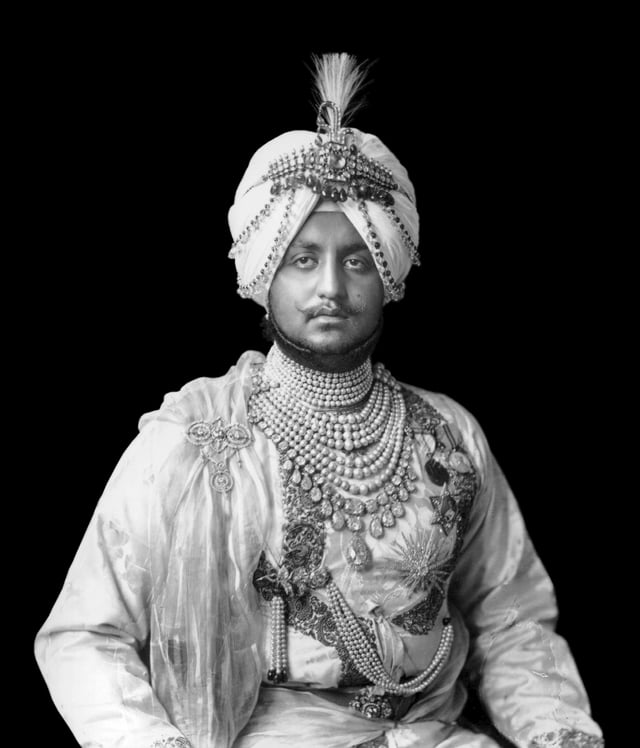
Maharaja Bhupinder Singh Sidhu of Patiala.
The rulers of Faridkot were Brar Jat Sikhs.[48]
Demographics
According to Encyclopædia Britannica
In the early 21st century the Jat constituted about 20 percent of the population of Punjab, nearly 10 percent of the population of Balochistan, Rajasthan, and Delhi, and from 2 to 5 percent of the populations of Sindh, Northwest Frontier, and Uttar Pradesh.
The four million Jat of Pakistan are mainly Muslim; the nearly six million Jat of India are mostly divided into two large castes of about equal strength: one Sikh, concentrated in Punjab, the other Hindu.[49]
Post-independence estimates
In 2012, the Hindustan Times reported that the Jat people in India were estimated to number around 82.5 million (8.25 crore).[50]
Republic of India
Consolidation of economic gains and participation in the electoral process are two visible outcomes of the post-independence situation.
Through this participation they have been able to significantly influence the politics of North India. Economic differentiation, migration and mobility could be clearly noticed amongst the Jat people.[57]
Pakistan
A large number of the Jat Muslim people live in Pakistan and have dominant roles in public life in the Pakistani Punjab and Pakistan in general. Jat communities also exist in Pakistani-administered Kashmir, in Sindh, particularly the Indus delta and among Seraiki-speaking communities in southern Pakistani Punjab, the Kachhi region of Balochistan and the Dera Ismail Khan District of the North West Frontier Province.
In Pakistan also, Jat people have become notable political leaders, like Asif Ali Zardari and Hina Rabbani Khar.[58]
Culture and society
Military
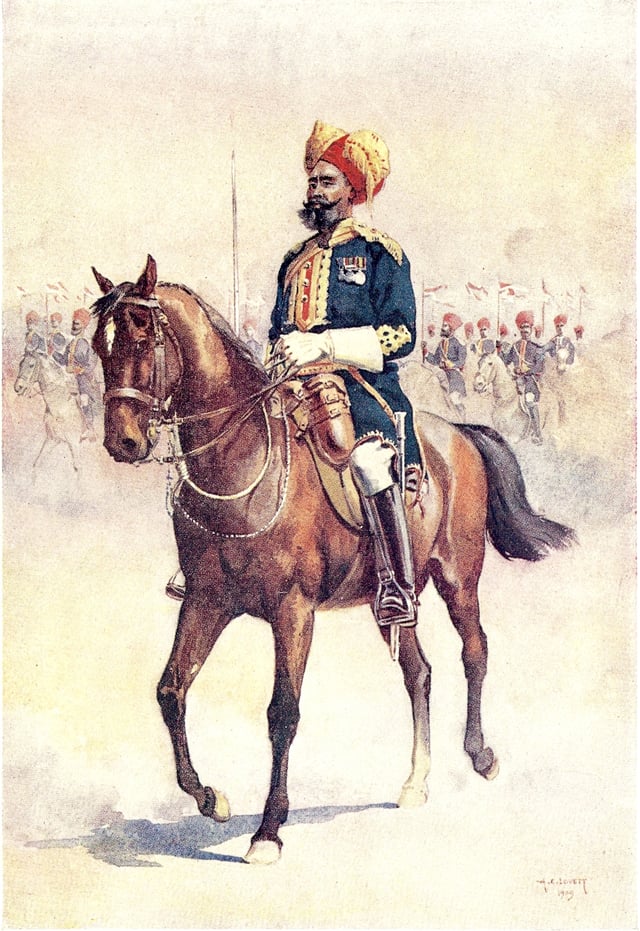
14th Murrays Jat Lancers (Risaldar Major) by AC Lovett (1862–1919).jpg
A large number of Jat people serve in the Indian Army, including the Jat Regiment, Sikh Regiment, Rajputana Rifles and the Grenadiers, where they have won many of the highest military awards for gallantry and bravery. Jat people also serve in the Pakistan Army especially in the Punjab Regiment.[59]
The Jat people were designated by officials of the British Raj as a "martial race", which meant that they were one of the groups whom the British favoured for recruitment to the British Indian Army.[60][61] The Jats participated in both World War I and World War II, as a part of the British Indian Army.[62] In the period subsequent to 1881, when the British reversed their prior anti-Sikh policies, it was necessary to profess Sikhism in order to be recruited to the army because the administration believed Hindus to be inferior for military purposes.[63]
The Indian Army admitted in 2013 that the 150-strong Presidential Bodyguard comprises only people who are Hindu Jats, Jat Sikhs and Hindu Rajputs. Refuting claims of discrimination, it said that this was for "functional" reasons rather than selection based on caste or religion.[66]
Religious beliefs
According to Khushwant Singh, the Jats' attitude never allowed themselves to be absorbed in the Brahminic fold.
The Jat's spirit of freedom and equality refused to submit to Brahmanical Hinduism and in its turn drew the censure of the privileged Brahmins....
The upper caste Hindu's denigration of the Jat did not in the least lower the Jat in his own eyes nor elevate the Brahmin or the Kshatriya in the Jat's estimation.
On the contrary, he assumed a somewhat condescending attitude towards the Brahmin, whom he considered little more than a soothsayer or a beggar, or the Kshatriya, who disdained earning an honest living and was proud of being a mercenary.[67]
Jats pray to their dead ancestors, a practice which is called Jathera. [68]
Varna status
The Hindu varna system is unclear on Jat status within the caste system. Some sources state that Jats are regarded as Kshatriyas[69] or "degraded Kshatriyas" who, as they did not observe Brahmanic rites and rituals, had fallen to the status of Shudra.[70] Uma Chakravarti reports that the varna status of the Jats improved over time, with the Jats starting in the untouchable/chandala varna during the eighth century, changing to shudra status by the 11th century, and with some Jats striving for zamindar status after the Jat rebellion of the 17th century.[71]
The Rajputs refused to accept Jat claims to Kshatriya status during the later years of the British Raj and this disagreement frequently resulted in violent incidents between the two communities.[72] The claim at that time of Kshatriya status was being made by the Arya Samaj, which was popular in the Jat community. The Arya Samaj saw it as a means to counter the colonial belief that the Jats were not of Aryan descent but of Indo-Scythian origin.[73]
Clan system
The Jat people are subdivided into numerous clans, some of which overlap with other groups.[74]
See also
List of Jats
Jat Regiment
Jat reservation agitation
World Jat Aryan Foundation
